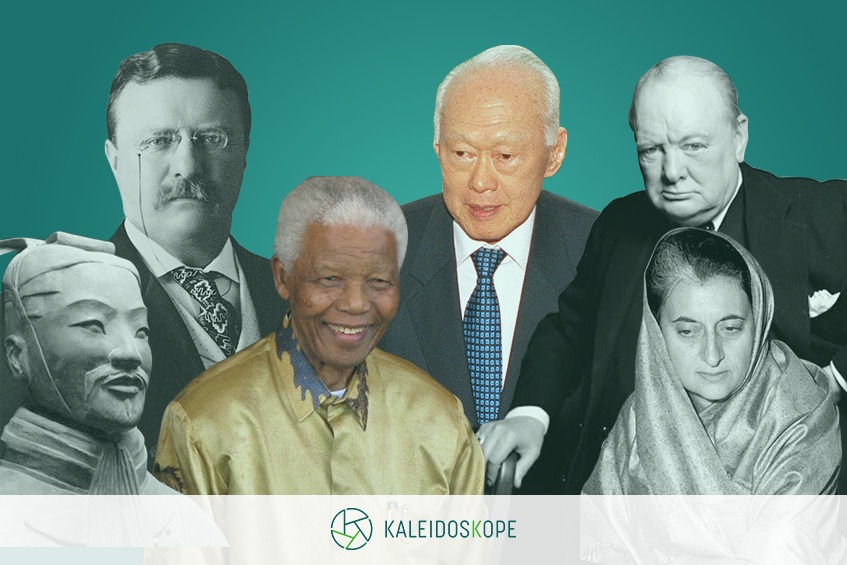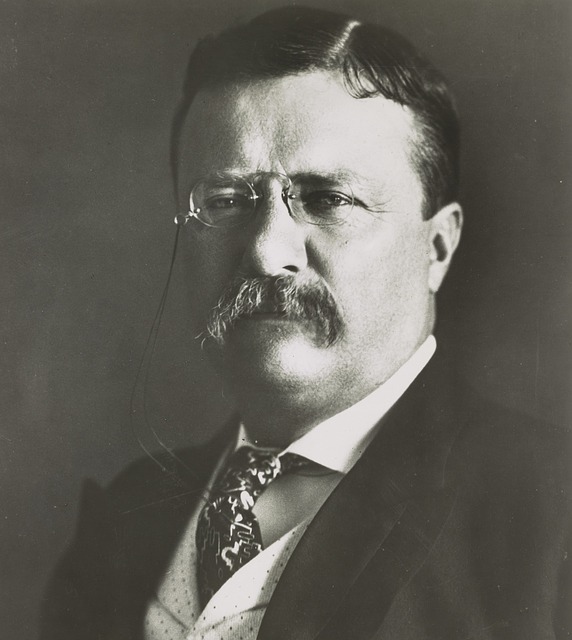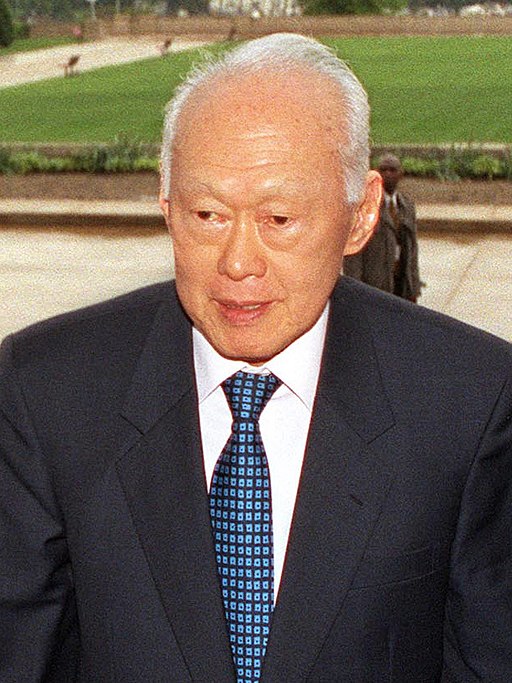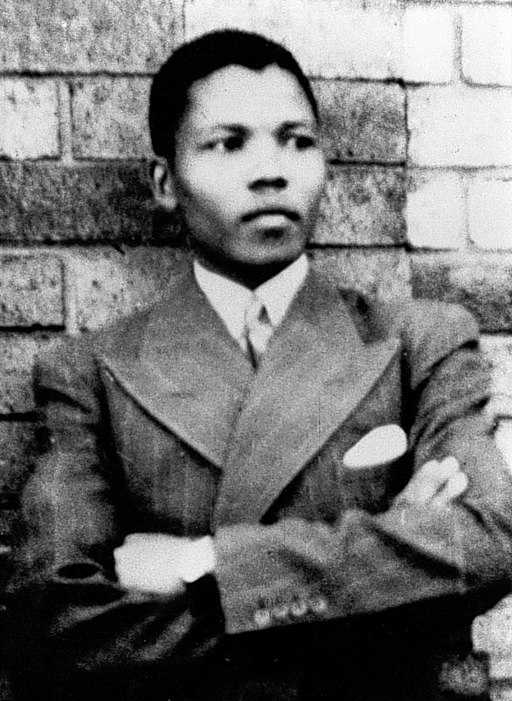Want to make history as a leader? Try studying these great leaders from history

It’s true, it’s super tough being any sort of leader, these days. Business conditions are immensely volatile, the next tech development could be the one that puts your company out of business. Everyone on your team seems to have their own agenda, and nobody is ready to come to a consensus. Global warming is real, and the ice caps are melting in Alaska. And oh, they want to know what your next official statement will be on social media.
But if you think being a leader today is tough, try thinking about what leaders had to wrestle with back in the day, without the benefit of much hindsight, dealing with wars, natural disasters and without the technological support we have taken for granted nowadays. They didn’t have our guide either: a guide specifically for leaders.
While the handful of leaders we discuss here are really not dealing with the corporate challenges, it’s still a relevant discussion. These leaders embody the paragons of the leadership qualities that are just as badly needed today as they were during their time. See if you practise (or would like to practise) one or more of the types of leadership as one or more of these world leaders.

Sir Winston Churchill
What is our aim? I can answer in one word: It is victory.
As Britain’s Prime Minister in the 1940s and 50s, Winston Churchill has gone down in history as one of the foremost leaders during World War II. Morale was low among Britons during the war, but Churchill rallied them with his now legendary communication skills, and kept things going with his indefatigable resolve to fight back against the Nazis.
Stand-out communication skills are typical of the democratic type of leadership, although prior to his successes in the Second World War, Churchill exhibited more qualities belonging to the autocratic leadership type. These qualities, which involve not consulting others and steamrolling over all other opinions, led to many mistakes.
Leaders are humans too! They commit their fair share of errors, and Churchill’s decisions at Gallipoli in Turkey, and in Ireland cost thousands of lives. But even these mistakes remain instructive to today’s business leaders. Data mustn’t be ignored or taken out of context when making crucial decisions.
These, coupled with the fact that he had no place for other points of view (Admiral John Fisher) also led to disastrous decisions in World War I. What probably saved us all was his willingness to admit these were mistakes, an unstoppable faith in his own ability, and an iron resolve and drive to move on. And as we all know, the rest was history.

Theodore Roosevelt
The best executive has sense enough to pick good people.
The 26th and youngest ever US President in 1901, Theodore “Teddy” Roosevelt is also considered one of the greatest and most beloved American leaders. Roosevelt’s presidency is characterised by action, and KPIs: it broke up over 40 monopolies, promoted the conservation of nature, and fought corruption in government offices.
His support for the construction of the Panama Canal has been cited as an example of the Laissez-faire type of leadership. This is team leadership, a conscious decision to delegate tasks, and empower his team members. It meant he trusted his team to do their jobs well!
Roosevelt was open to working with different kinds of people, even if he didn’t see eye to eye with them. He leveraged strengths and complemented weaknesses, to build a cohesive whole working toward the realisation of a vision.
Rossevelt was open to diversity of views in his team. He appreciated different points of view, leveraging on different perspectives, and trusted his team enough to delegate and power. In doing so, he harnessed the power of the team to create magic.
Sun Tzu
A leader leads by example, not by force.
Chinese military general and war leader Sun Tzu is best known for authoring The Art of War. While little else is known about him other than his being born in Ch’i State around 500 BC, many business leaders continue to take their cue from his writings. These writings started becoming popular in Europe in the 1700s, and in the US some 200 years later.
If the type of leader Sun Tzu was may be inferred from what he wrote, he might be said to have exemplified coaching leadership. This leadership style focuses on the team member. He takes an in-depth interest and understanding of his team members, and is focused on building everyone to their peak performance. Sun Tzu says “you have to believe in yourself” and “know yourself and you will win all battles”.
In relation to this, Sun Tzu says you need to be humane, or know how to relate to your team members as individual human beings, not mere minions to perform a task. Treat your team members as family, as you would your own children, and focus on nurturing, and understanding their individual circumstances. Believe in them, guide them, coach them as you believe they are capable of coming up with their own solutions.
Sun Tzu was first and foremost a strategist, so it’s natural that he exhibited traits of the strategic type of leadership. These leaders focus on crafting strategies that creates high performance in their teams. They leverage on their in-depth understanding, and analysis of each team member, gracefully, and effectively moving each part to fit into the bigger picture of their strategy.

Lee Kuan Yew
A leader without the vision, to strive to improve things, is no good.
The founding father of modern Singapore and the country’s first Prime Minister, Lee Kuan Yew faced the challenges of a nascent republic head-on with his characteristic no-nonsense approach to nation-building. Thanks to his unshakeable resolve, the country has come to take pride of place in the regional and global economy, where it remains to this day.
During his three decades of leadership, Lee Kuan Yew encouraged racial harmony and foreign investments, drove infrastructure development, strengthened the country’s military and successfully eradicated corruption in the government.
As a textbook example of the autocratic type of leadership, Lee Kuan Yew brooked little opposition from his political rivals or the press. It may be reasoned that the prevailing political climate at the time of his rise to power necessitated such strong-willed and decisive action. He may also be seen to embody transformational leadership for driving large-scale, progressive change, as well as visionary leadership, secure, and unstoppable in his vision for a country that not many people share, or can even imagine.
Among the many, vividly demonstrated leadership lessons that business leaders stand to learn from Lee Kuan Yew for generations to come, perhaps the most salient is to never let anything distract you from the fulfilment of your vision. Though he was often criticised for being dictatorial, he stayed his course and masterfully orchestrated the transformation of his country in a single lifetime.
Indira Ghandi
For they who serve their country, nothing is impossible.
India’s third, and first, only female Prime Minister, Indira Ghandi served two terms beginning in 1966, and again in 1980 until her assassination in 1984. While her administration was plagued by controversy and was enforced at times by dubious means, her determination and single-minded dedication to serving her country continues to inspire people around the world today.
Despite significant personal problems and constant criticism, Mrs Ghandi brought India to recognition on the global stage. Her firm, skillful handling, and mastery of foreign policy, particularly involving the tricky situations in Pakistan and Bangladesh in the 1970s, and her work with the Non-Alignment Movement in the 1980s were major contributions to peace in the region.
Also in spite of being described as cold, aloof, or even rude in private, the public Mrs Ghandi may be said to exemplify the charismatic type of leadership. The leader’s unique personality is brought to bear on the leadership style or approach. She was much admired for her unwavering tenacity, and remarkable will and ambition to build a strong and dynamic India.

Nelson Mandela
Lead from the back—and let others believe they are in front.
South Africa’s first democratically elected president, Nelson Mandela is celebrated around the world for his fight against apartheid and emerging from his 27-year imprisonment for the cause with the spirit of forgiveness and reconciliation. A Nobel Peace Prize winner in 1993, he was the archetype of the soft-spoken yet authoritative negotiator he became in his later years.
Like all of us humans, Mandela’s career was often dogged by fodder for critics. His early days in politics favoured armed struggle as a means of achieving racial equality, and his time in office saw the gap between the nation’s rich of both races and the poor continue to widen. Yet, his struggles to do right by all of his people continue to shine through.
Apart from being a sterling example of the cross-cultural type of leadership, “Madiba” was clearly also a transformational and visionary type of leader. He clearly has given his entire life to driving real change, and it is probably in this leader, Madiba, who most exemplifies resilience in the face of challenges.
How will you mark your leadership style in this millennium?
While we may not be battling challenges on the international stage, we are all leaders in our own teams, our organizations, and in our little eco- systems.
Let the leadership and coaching trainers at Kaleidoskope help you become the type of leader you want to be, as well as the leader your organisation needs. Ask us about our leadership training programmes, today.
Leadership Training
- Business Storytelling – A Critical Skill For Great Leadership
- Want to make history as a leader? Try studying these great leaders from history
- Solution Focused Leadership Coaching
- Leading the Way for Leaders: How Your Leadership Can Continue to Evolve
- How to Manage a High-Performance Team Made Up of Different Personalities
- Have You Mastered the 4 Leadership Fundamentals?
- Do You Practise Adaptive Leadership? Your Organisation Needs You To
- Why A Good Leader Needs To Understand Business Agility
- 20 Qualities of a Good Leader in Times of Change (A Checklist)
Corporate Training
- Why is your training, boring?
- Learning Initiatives at Work CAN Lead to A Great ROI. Here’s How
- Corporate Training Doesn’t Seem to Be Working? You Need an HPLJ Approach!
Facilitation Training
- Facilitate a High Impact Training Course with Accelerated Learning
- Accelerative Learning – A Better Return on Training Investment (Part 1)
- Accelerative Learning – A Better Return on Training Investment (Part 2)
- Accelerative Learning – A Better Return on Training Investment (Part 3)
Virtual Learning
Start Your High-Performance Learning Journey
WITH KALEIDOSKOPE NOW!
Most coaching methods focus on solving a “problem”, rather than building the solution. It’s an easier approach. If you hit the Search button for “Employee Coaching” online, the first few options that pop up promise you to teach you “how to fix performance problems”.
Solution Focused Leadership Coaching

Coaching is a powerful way to help employees unlock their potential. And this necessitates a high-impact leadership training, particularly in Singapore’s fast-developing business landscape.
Most coaching methods focus on solving a “problem”, rather than building the solution. It’s an easier approach. If you hit the Search button for “Employee Coaching” online, the first few options that pop up promise you to teach you “how to fix performance problems”.
But here at Kaleidoscope, we take a different route.
Instead of looking at weaknesses, or “performance problems”, our Solution Focused approach looks to the future, the coachee’s strengths, and their goals. By empowering you to look at your own capabilities instead of where you’re currently stuck, we build a map of actionable and sustainable solutions.
How is Solution Focused coaching different from other approaches?
A trained Solution Focused coach uses a strength-based approach to address solutions rather than problems. The spotlight is shifted from the problem to the solution.
When we de-link the problem and the solution, identifying the root cause of the problem becomes secondary, and the conversation focuses on the solution. The coaching conversation goes on to explore “What’s Wanted” instead of “What’s Wrong”.
It can be difficult to distance the solution from the problem.
A Solution Focused coach, therefore, might ask what a coachee has done successfully in the past, perhaps in similar situations, or what does the future look like …when the problem is resolved. By focusing the conversation perhaps on a coachee’s past successes, or a positive future, a Solution Focused coach surfaces the coachee’s resources and abilities, empowering the coachee, and helping him understand that they are already on the way to finding solutions.
The dialogue is focused on helping the coachee form a clear picture of their preferred future, instead examining their problems under a microscope.
The coachee’s insights are built as a result of the dialogue that takes place during coaching, which is why we say that a Solution Focused approach is about building solutions.
Let’s see a recent, real-life demonstration of this …
Mr. Tan, a senior director at a public sector organization, recently found out that his team was very unhappy with his level of engagement through the results of a 360-interview.
As the interviews were in written form, there was no platform for Mr Tan to defend, or oppose to these criticisms. During the coaching session, Mr. Tan started getting defensive in explaining why his employees were unhappy with his performance. “The millennials in my team are really problematic … these guys take things for granted, they come in late and leave on time,” he says.
I observed very clearly that a wall of defensiveness was in construction. The rapport I had built with him at the start of the conversation was crumbling. I flipped the 360-feedback booklet over and took the conversation in a new direction. “Mr Tan, you’ve been with the organization for a long time. There must be something you enjoy doing here to have stayed for 32 years. Are you still happy here?”
There was silence. Mr Tan looked at me, a little stunned, then his eyes slowly looked away and gazed out of the window. I waited. After a while, he finally spoke, sounding resigned.
“You are right. I’m not happy.”
“Yet you have chosen to stay for 30 years. Let’s suppose you are happier somewhere else, what would you be doing differently?”
“I’d be retired, spending more time at home. But my wife … she doesn’t like me to be at home. She only likes my supplementary credit card.” It was clearly a very sensitive topic and a tender moment. Mr. Tan was nearly in tears.
“How would you like your relationship with your wife to be like instead?” I watched him visibly perked up as he excitedly started talking about the “good-old days”.
As we progressed in the conversation, he became slowly aware that his relationships with people, including his wife, were very transactional. The clearer he was about where he wanted to be in the future, the more driven he was to improve his relationships with people now.
The first step in his journey was thinking about how he could show more affection for his wife (isn’t it always? …happy wife, happy life), closely followed by how to bridge relationships with his younger team members.
This is what we meant by de-emphasizing problem solving.
Through asking questions, and guiding the conversation to raise his awareness rather than be fixated on fixing the problems, Mr. Tan was given space away from the overwhelming negativity of his problems, and brought to a place where he could generate his own solutions.
Paradoxically, by focusing less on problems, we expand the possibilities and create more sustainable solutions.
Who Should Learn Solution Focused Coaching?
Anyone can benefit from Solution Focused coaching, no matter where you may be in your career, or which rung you are on the corporate ladder.
This coaching approach helps coachees realize their full potential, and employees break through self-imposed limits. Solution Focused coaching is an ideal approach in today’s fast-paced world. The concept is simple and straightforward.
Most importantly, Solution Focused coaching creates a hopeful and positive environment that empowers instead of overwhelms.
If you’d like to train solution-focused coaches in the house at your organisation, send your enquiry to us at Kaleidoskope, today.
Leadership Training
- Business Storytelling – A Critical Skill For Great Leadership
- Want to make history as a leader? Try studying these great leaders from history
- Solution Focused Leadership Coaching
- Leading the Way for Leaders: How Your Leadership Can Continue to Evolve
- How to Manage a High-Performance Team Made Up of Different Personalities
- Have You Mastered the 4 Leadership Fundamentals?
- Do You Practise Adaptive Leadership? Your Organisation Needs You To
- Why A Good Leader Needs To Understand Business Agility
- 20 Qualities of a Good Leader in Times of Change (A Checklist)
Corporate Training
- Why is your training, boring?
- Learning Initiatives at Work CAN Lead to A Great ROI. Here’s How
- Corporate Training Doesn’t Seem to Be Working? You Need an HPLJ Approach!
Facilitation Training
- Facilitate a High Impact Training Course with Accelerated Learning
- Accelerative Learning – A Better Return on Training Investment (Part 1)
- Accelerative Learning – A Better Return on Training Investment (Part 2)
- Accelerative Learning – A Better Return on Training Investment (Part 3)
Virtual Learning
Start Your High-Performance Learning Journey
WITH KALEIDOSKOPE NOW!
Being a good leader isn’t something you can memorise, or take lessons for then consider yourself an expert, afterwards. While skills and certain principles may be taught, it’s up to you to make a conscious effort to put them into action.
Leading the Way for Leaders: How Your Leadership Can Continue to Evolve

John F Kennedy once wrote that “Leadership and learning are indispensable to each other.” As the leader of an entire nation counting on him to steer them through delicate foreign relations, economic difficulties, racial discrimination and other domestic issues, this US President knew he couldn’t afford to let his leadership skills slide.
Being a good leader isn’t something you can memorise, or take lessons for then consider yourself an expert, afterwards. While skills and certain principles may be taught, it’s up to you to make a conscious effort to put them into action.
There’s no real substitute for the experience you gain in the field as you pay close and careful attention to the impact of your actions on those you lead. This doesn’t mean, however, that the skills that a good leader ought to have can’t be learned or imparted in the form of guidance or mentorship.
A Guide Designed for Those Who Guide
To help you and the leaders in your organisation evolve your leadership abilities, we’ve put together this compact reference as a guide that acts in much the same way as a lighthouse for ships on a turbulent sea. It can be easy to lose sight of your role’s meaning or purpose amid the frenetic activity of your day-to-day, and the uncertainties of today’s business environment.
With entire teams of people and their respective leaders clamouring for your attention and multiple responsibilities demanding to be fulfilled, it can be helpful to take a step back and remember
- What it means to be a leader
- What are the critical traits a leader needs to have
- What a leader needs to do to address internal issues within the organisation
- How can a leader rise to the occasion to meet external challenges
This “quick refresher course”, if you will, just might help you keep your leadership goals in sight and within reach, and keep you on the path toward achieving them.
What It Means To Be A Leader
There are many definitions of who a leader is and what he’s meant to be doing, but they all might be distilled into this basic concept: A leader is a leader not because of the title he has, but the role he has to fulfil—and that role is to serve those he leads, and not himself. This means putting the needs of the organisation first, and making sacrifices toward this end.
Being a leader means being responsible for everyone in your charge, and constantly thinking of the greater good, which sometimes means overriding the individual. The larger the organisation or the more people you have under your care, the greater your responsibility.
This is one of, if not the guiding principle in making the tough decisions which, as a leader, are your job to make on a daily basis. When things get complicated, fast, ask yourself how a course of action in one way or the other affects everyone involved—from key management all the way down to maintenance. Everyone, not just a chosen few, must be able to benefit.
What Are the Critical Traits A Leader Needs to Have
It’s interesting to note how a list of characteristics that people expect their leaders to have, might often be seen on similar lists pertaining to heroes, idols, or anyone people look up to. But while we offer you a checklist of 20 Qualities of a Good Leader in Times of Change, we also point out that these qualities generally aren’t acquired overnight, nor on your own.
When we say “on your own”, we refer not to your personal initiative or drive for self-improvement, but rather to the fact that leadership doesn’t take place in a vacuum. Qualities on our checklist such as vulnerability and generosity, for instance, particularly require interaction with others to develop.
After going through this checklist and ticking off such qualities as you consider yourself to possess to an acceptable degree, it might be helpful to look back at the list later on to see whether you’ve improved. You might even make one or more of these qualities the object of a sort of “new year’s resolution” for you to work on.
What a leader needs to do to address internal issues
In every organisation in every vertical across industries, teams are made up of people, and no two people are ever alike. As diversity in terms of background, skills and specialisations continues to abound in the workplace, it falls to you, as a leader, to make sure everyone is able to work together as smoothly as possible.
We offer you some advice for How to Manage A High-Performance Team Made Up of Different Personalities, reiterating the need for empathy and the ability to reach out and connect with people. While office cultures vary between organisations, the need for mutual respect, tolerance and trust between co-workers is a must at any level.
If a breach in this trust should occur or a line should be crossed, which does happen sometimes even in (or sometimes especially in) the closest-knit teams within “family atmosphere”-type cultures, it falls to you to restore harmony. You might refer to your organisational values and ask yourself, again, what the best course of action would be as regards the greater good.
How Can a Leader Rise to Meet External Challenges
- Political issues
- Economic trends
- Technological developments
- Natural disasters
- Social questions
These are just some of the myriad factors affecting business growth, and as a leader, it’s your duty to see that your organisation is able to react in a timely fashion and to adapt accordingly.
Providing a prompt and effective response to challenges as they happen is the function of business agility. An organisation encumbered by a rigid hierarchy or bureaucratic procedure, for instance, would find itself quite unable to move quickly should an opportunity (or an impending disaster) present itself. Review the reasons Why A Good Leader Needs to Understand Business Agility.
It’s not enough for an organisation, however, merely to react—especially in the midst of the likes of a downward trend or negative backlash to an unforeseen event. An organisation must be able to adjust or change its team structures and business processes, for instance, and it’s up to you as a leader to effect these changes as needed.
This entails keeping an open mind and a willingness to learn, and while it’s undeniably admirable to adhere unflinchingly to a set of values and a work ethic, clinging to outdated procedures or methodologies will do your organisation no good. Ask yourself, Do You Practise Adaptive Leadership? to find out whether you’re the kind of leader your organisation needs.
Learn From Other Leaders
Being able to adapt, or to evolve as a leader comes with the territory of business growth. As with growth in general, not changing into something better is precursory to death—or stagnancy, at best. You owe it to the people you lead to keep on learning to become a good leader. It’s your responsibility to them as well as to yourself.
The good news is that you’re not alone—nor should you be. At the heart of your evolution as a leader is the ability to listen and empathise with the needs of those around you, within and outside of your organisation. Learning opportunities are just waiting to be found within every interaction; all you have to do is to seize them as they come.
Find guidance and mentorship specially designed for leaders and leaders-in-the-making with trainers who know what it is to be leaders, themselves. On top of decades of experience in leadership and management training, executive coaching, and business agility, our trainers have held key management positions in leading multinationals across the region and beyond.
Leadership Training
- Business Storytelling – A Critical Skill For Great Leadership
- Want to make history as a leader? Try studying these great leaders from history
- Solution Focused Leadership Coaching
- Leading the Way for Leaders: How Your Leadership Can Continue to Evolve
- How to Manage a High-Performance Team Made Up of Different Personalities
- Have You Mastered the 4 Leadership Fundamentals?
- Do You Practise Adaptive Leadership? Your Organisation Needs You To
- Why A Good Leader Needs To Understand Business Agility
- 20 Qualities of a Good Leader in Times of Change (A Checklist)
Corporate Training
- Why is your training, boring?
- Learning Initiatives at Work CAN Lead to A Great ROI. Here’s How
- Corporate Training Doesn’t Seem to Be Working? You Need an HPLJ Approach!
Facilitation Training
- Facilitate a High Impact Training Course with Accelerated Learning
- Accelerative Learning – A Better Return on Training Investment (Part 1)
- Accelerative Learning – A Better Return on Training Investment (Part 2)
- Accelerative Learning – A Better Return on Training Investment (Part 3)
Virtual Learning
Start Your High-Performance Learning Journey
WITH KALEIDOSKOPE NOW!
How do you keep your team running like a well-oiled machine when its parts don’t seem to fit together? Find out how in our latest blog.
How to Manage a High-Performance Team Made Up of Different Personalities

When it comes right down to it, all men aren’t created equal. Now this is not necessarily a bad thing, especially when it comes to assembling your business team. Having team members with different backgrounds, as well as skills and specialisations, is what drives innovation and ensures that you have all the bases covered by receiving inputs from all possible sides.
It’s up to you, the team leader or manager, to see to it that everyone on your team is performing their best, contributing all that they can, and is happy while working with everyone else. This, of course, is much easier said than done, as many teams in today’s workplace have members who may be about as alike as chalk and cheese.
How do you keep your team running like a well-oiled machine when its parts don’t seem to fit together? It all boils down to taking a micro and macro view of your team, which means relating to individual team members, and considering the needs of your team as a whole.
Go, Team… Players!
Acknowledging everyone’s individuality is the first step towards unity. While that may seem self-contradictory, it makes sense when you think of it as an assessment of the way someone fits into your team. Getting to know each team member through regular one-on-one’s will enable you to adjust your management style accordingly as both coach and team captain. Many descriptions and evaluations of the various personality types exist (such as this one by Deloitte), but to give you a fresh and hopefully clearer perspective of team dynamics, we have our own sporty take on workplace personalities. We’ll also give you a hint or two as to how you may be able to adapt to each of them or relate to them on a personal level.
- The Most Valuable Player (MVP). These are your super achievers who are very good at what they do. They’re quick on the uptake, able to work independently, and readily learn what they need to, as needed. They are also often able to help others out whilst performing their own tasks and have a healthy amount of confidence in their abilities.
Even if they may not express it openly (or even be aware of it), MVP’s look for affirmation of their achievements. However, there are MVP’s who, knowing just how good they are, might be a bit too confident. If such is the case with one of your own, try having a two-person huddle to remind your star player that everyone else on the team is just as valuable as he is.
- The Defender. These are your introverts, the “strong and silent” types who are great at what they do, but aren’t the type to broadcast it. Because of this, other team members might get the idea that defenders may not be as smart or slacking off. In this instance, communication has a crucial role to play in letting everyone know what everyone else is actually up to.
Bear in mind that it’s not that defenders are stand-offish; indeed, many of them are just naturally diffident—but this does not in any way detract from the often high quality of their performance. As you encourage them to be more communicative and assure them that they will be listened to, be sure to check in with them regularly in a friendly, unobtrusive manner.
- The Cheerleader. These are your social butterflies who get along with everybody and want to make sure everyone is all right. In terms of performance, many of them do tend to be above average and excel at project management. Team members generally feel comfortable around them and may look to them for both work-related and moral support.
Because of the way they seem to know what’s going on with everybody, cheerleaders might give the impression that they are nosy or a source of workplace gossip. They might also seem to be spending more time on the office grapevine than actually working. Again, open team communication and a quick tête-à-tête may be all you need to get them back on track.
- The Wildcard. These are your creatives, the artistic, unconventional types who don’t seem to think in the same way as everyone else, and therefore tend to be a tad unpredictable. Yet, these are the team players who usually (not exclusively) come up with the ideas that could (and often do) make a whole difference to the team’s overall output.
Though they may not always appear to be, wildcards work as hard as anyone and are usually more emotionally invested into their work. Because of this, they need to know that their work is respected or appreciated. As you give wildcards the space they need to ideate and create, channel their energies to make sure that their innovations remain aligned with team goals.
- The Benchwarmer. Let’s be honest, every organisation has them, but don’t let their name fool you—these team players play a role that’s just as important as the rest of the team. While they may not particularly stand out in terms of performance, they are the backbone of your team whom you should be able to count on to give their hardworking best time after time.
While not every benchwarmer has the potential to become an MVP, they have strengths as well as weaknesses just like everyone else. Reach out to them so you can work on identifying these strengths in order to build them up, as well as compensate for the weaknesses where possible. Don’t forget—these team players also have a hand in carrying out your game plan.
United, We Stand
The winning strategy for your personality-diverse team also hinges on how you understand and facilitate the way your team works as a single unit. In writing for Fast Company, Ted Leonhardt points out how it’s possible to set norms or rules of conduct for your whole team that everyone can observe regardless of their individual personalities.
These norms may vary between teams and organisations, but they generally include reminding everyone of the objectives that the team needs to reach together, and that everyone has an important role to play in meeting those objectives. Remind everyone that they need to show respect towards everyone else on the team, and that no one should be left out or left behind.
Assure everyone that they’re not alone on the team and that you and everyone else are ready to help when necessary and to listen when they have something to say. But remind them likewise that everyone is counting on them to perform their tasks well, and to complete them on time.
And just as you continue to build personal, individual relationships with each member of the team, you can also get to know them collectively by working alongside them wherever possible. Also make it a point to celebrate victories (big or small) with them, and to be there for them (as well as learn from it) when things don’t go according to plan.
Leading and managing teams is something we know a lot about at Kaleidoskope, as our trainers have helped key decision-makers as well as those with leadership potential to become better, more effective leaders. Find out how you can hone your own leadership skills along with those of your fellow managers by getting in touch with us at Kaleidoskope, today.
Leadership Training
- Business Storytelling – A Critical Skill For Great Leadership
- Want to make history as a leader? Try studying these great leaders from history
- Solution Focused Leadership Coaching
- Leading the Way for Leaders: How Your Leadership Can Continue to Evolve
- How to Manage a High-Performance Team Made Up of Different Personalities
- Have You Mastered the 4 Leadership Fundamentals?
- Do You Practise Adaptive Leadership? Your Organisation Needs You To
- Why A Good Leader Needs To Understand Business Agility
- 20 Qualities of a Good Leader in Times of Change (A Checklist)
Corporate Training
- Why is your training, boring?
- Learning Initiatives at Work CAN Lead to A Great ROI. Here’s How
- Corporate Training Doesn’t Seem to Be Working? You Need an HPLJ Approach!
Facilitation Training
- Facilitate a High Impact Training Course with Accelerated Learning
- Accelerative Learning – A Better Return on Training Investment (Part 1)
- Accelerative Learning – A Better Return on Training Investment (Part 2)
- Accelerative Learning – A Better Return on Training Investment (Part 3)
Virtual Learning
Start Your High-Performance Learning Journey
WITH KALEIDOSKOPE NOW!
Want to become a better leader? Remember mastery begins with fundamentals and to strengthen your foundation. Click the link to know more!
Have You Mastered the 4 Leadership Fundamentals?

“He who would learn to fly one day must first learn to stand and walk,” began the quote by Nietzsche. Having trained both leaders and those with leadership potential over a number of years, we’ve designed our very own Leadership Fundamentals Programme or LFP with the overall objective of soaring to new heights in leadership.
Let’s take a closer look at the programme’s 4 Leadership Fundamentals in turn, what you can do to master them over time, and how and your organisation stand to benefit from your mastery.
-
Relationship Building
Becoming a good leader means being able to build sustainable relationships with peers and teams, understanding their personal behaviours and adapting to different, individual styles.
Writing for the Educause Review, Beth Schaefer notes the importance of regarding your organisation as a community, working toward common goals and sharing the same values as one way to build relationships at work. It’s important to define these goals and values clearly so as to be able to guide everyone in the community.
As a leader, you have to want to provide that guidance, and be responsible for seeing that everyone reaches your goals, together. To do this, you’ll have to motivate your team and create a trusting and supportive environment as they will need to support and trust you.
As you continue to connect with team members, keep an eye on how the relationships between you, yourself and others or between others on your team can either be maintained or strengthened. This involves recognising individual personalities and capabilities, asking questions that really matter, and really listening to the answers.
This, in turn, means that you, as well as your team, will need good communication skills. Making sure that everyone is on the same page will help improve your group dynamics and teamwork, putting your common values into action and making your organisational goals that much more attainable.
-
Resilience
Leaders have to master resilience in dealing with uncertainty and changes at work and beyond.
Research indicates how your ability to lead your team through change hinges on your ability to acknowledge and control your own reactions to a change as it comes. After all, how will you be able to answer the questions and allay any fears that usually come with change, and spur your team to take the necessary action unless you, yourself are mentally prepared to do so?
It is possible to train yourself to gain control of your reactions to change and develop resilience. You can start by taking a moment to take stock of the situation, calming down, and then thinking about what can be done to turn things around. Only then will you be able to provide the appropriate response to the situation.
Cutting yourself a little slack is another way to becoming more resilient, as change is a breeding ground for self-judgment. But while it is important to master yourself before you can lead others, know that even at this stage, you don’t have to go at it alone. Reaching out to others on your team helps you develop your resilience as it is also a form of moral support.
-
An Innovative Mindset
Our LFP also focuses on the need to adopt an innovative and experimentation mindset towards tackling tasks and solving problems creatively.
Research by McKinsey & Company reveals that while over 70% of senior executives have said that innovation was one of the top three drivers of their companies’ growth, about 65% of them have expressed a lack of confidence in this area. These leaders seemed to doubt their ability to foster innovation, and to find it frustrating to create an innovative corporate culture.
Committing to creating this culture can make it possible, however, to give innovation the place it needs to have at your organisation. Formalise that commitment in writing by including innovation in your management agenda, so that it can be tracked as a key performance indicator.
You can also make the most of the innovative talent that you already have in-house, as many organisations tend to leave this invaluable resource untapped. You can do this by setting systems in place that will empower these innovators to work their magic.
In relation to this, cultivate trust among your teams, which will reassure anyone with an innovative idea that these ideas are important, and encourage the sharing of those ideas. This trust can be far more powerful than any monetary incentive for promoting innovation.
-
Managing through Influence
Leaders must likewise be able to manage stakeholders through effective influencing techniques.
In writing for Forbes, Navy SEAL combat veteran, Brent Gleeson highlights the ability to influence others to believe in your mission and your goals as one of the most important aspects of effective leadership. If you can get your team to have that same strong belief you have in your collective ability to succeed, your organisation is well on its way towards success.
Note that influence doesn’t entail getting creative with the truth or putting an unrealistic positive spin on things, but convincing your team that your strategy is sound. This can be done by clearly defining the results you need to achieve, and then outlining your plan for achieving them.
Taking off from relationship building, you also need to get to know the stakeholders you need to influence, so as to be able to figure out the best ways for to get them to buy into your strategy. As you get to know them better, you can also get their feedback on the plan which will enable you to improve it.
But demonstrating your credibility is perhaps the most important factor in influencing your team—showing them why they should believe in you and your plan is crucial to convincing them to follow it, and you.
Four fundamentals may not seem like a whole lot, and yet any leader worth his salt would tell you how challenging it can be to master even one. “If you want to be a leader, the good news is that you can do it,” says John C. Maxwell. “Everyone has the potential, but it isn’t accomplished overnight. It requires perseverance.”
Ask us about our Leadership Fundamentals Programme and get started on becoming a better leader, now.
Leadership Training
- Business Storytelling – A Critical Skill For Great Leadership
- Want to make history as a leader? Try studying these great leaders from history
- Solution Focused Leadership Coaching
- Leading the Way for Leaders: How Your Leadership Can Continue to Evolve
- How to Manage a High-Performance Team Made Up of Different Personalities
- Have You Mastered the 4 Leadership Fundamentals?
- Do You Practise Adaptive Leadership? Your Organisation Needs You To
- Why A Good Leader Needs To Understand Business Agility
- 20 Qualities of a Good Leader in Times of Change (A Checklist)
Corporate Training
- Why is your training, boring?
- Learning Initiatives at Work CAN Lead to A Great ROI. Here’s How
- Corporate Training Doesn’t Seem to Be Working? You Need an HPLJ Approach!
Facilitation Training
- Facilitate a High Impact Training Course with Accelerated Learning
- Accelerative Learning – A Better Return on Training Investment (Part 1)
- Accelerative Learning – A Better Return on Training Investment (Part 2)
- Accelerative Learning – A Better Return on Training Investment (Part 3)
Virtual Learning
Start Your High-Performance Learning Journey
WITH KALEIDOSKOPE NOW!
Do you and your managers have the 20 qualities of a good leader that your company needs? See how many items you can tick off of our checklist.
20 Qualities of a Good Leader in Times of Change (A Checklist)
Industrial revolutions, economic crises, scientific breakthroughs—no matter what changes come along to throw the course of business off balance, people look up to a good leader not just to get them through it but to thrive.
With technology changing the world and the political landscape shifting right before our eyes, today’s businesses need good leaders to drive positive change. And because 75% of organisational change efforts fail to make an impact, businesses need these leaders more than ever. As such, leadership training is crucial, especially in Singapore, which is at the forefront of the global disruptive transformation.
Do you and your managers have the 20 qualities of a good leader that your company needs? See how many items you can tick off of our checklist.
Are You…
- Brave. Change can be scary, particularly when a business needs to adopt new technology or is about to branch out into a new market or market segment. As a good leader, you need to have the courage to take the necessary risks and to adapt to an ever-changing market.
- Decisive. Change should be progressive by nature, and only confident, definitive action can keep it moving forward until the desired changes have been implemented. Constantly reneging on your decisions is taking two steps back for every step forward.
- Passionate.Good leaders feel very strongly about what their organisations do, what they do in it, and about helping everyone within it to do better and to feel better about what they’re doing.
- Level-headed.While you are passionate about your work, you also know how to keep emotions such as fear or frustration in check. This may not always be easy to do depending on your temperament, but must be done to keep it from seeping into the workplace.
- Process-oriented.Without undermining the importance of measuring results, focusing on how these results are achieved is something a good leader can’t afford to neglect as change is implemented throughout the organisation. Understanding this well will ensure that good results can be replicated while less satisfactory ones can be avoided.
- Forward-looking.While good leaders are aware of and anticipate developments, they are also prudent in making provisions for an uncertain business environment. They do not allow their optimism to blind them to the reality of limited resources and other occupational hurdles.
- Patient.Real change doesn’t happen overnight, but rather comes with a learning curve. A good leader understands that it takes time to take to new technology or to become accustomed to new processes.
- Vulnerable.While you might think that you need to put on a show of strength, particularly during trying times such as organisational change, showing vulnerability can encourage your team to contribute and respond.
- Resilient. When the changes within an organisation are bad (or seem that way), good leaders won’t let those changes faze them. While we’ve established that it’s okay to reveal a softer side of yourself, let your steel core find ways to keep you and everyone on your team going.
- Generous. This trait not only applies to remuneration or benefits, but also to intangibles such as praise, encouragement, and sharing the spotlight with the other members on your team. You can also be generous with your time, especially when team members need help.
Are You Able To…
- Accept the unpredictability of change. As much as we would love to be prepared for any eventuality, change is always bound to throw a monkey wrench into even the best-laid plans. Instead of sticking to iron-clad notions of how things are “supposed to work”, stay flexible.
- Keep an open mind. Even if a method or an idea goes against everything you’ve been taught, be willing to listen and to try it out. Instead of second-guessing how the new idea will fail, try to foresee how the new idea might be used and succeed to the company’s benefit.
- Earn people’s trust. From stakeholders and staff to suppliers and customers, people need to feel comfortable with sharing their thoughts, ideas and feelings with you, knowing that they can count on you to act accordingly.
- Identify your own strengths and weaknesses. Be honest with yourself about what you’re good at and what you need help with. No single person in an organisation knows or can do everything, and a good leader will be able to admit this.
- Form a well-balanced team. Knowing your own strengths and weaknesses leads to knowing the kind of members you need on your team. You’ll need people who not only complement your own areas for improvement but also each other’s capabilities.
- Get feedback on the ground. No matter how large your organisation might be, you can always find ways to find out what’s really happening on the front lines—in front of clients and among co-workers. This is an effective way of determining what needs to be changed for the better.
- Empathise with your team. Put yourself in the shoes of those who are actually carrying out the transformation process, not just to identify their challenges but to understand how they feel or how they are coping with the changes. This is how a good leader can boost team morale.
- Involve your team in the decision-making process. Let your team know that they are an integral part of making change happen, as opposed to simply carrying out a transformation plan. This helps to give them a sense of ownership and accountability.
- Never stop learning. Leading through change entails constantly learning and trying out new skills, processes or technology, which in turn will require you to step out of your comfort zone. Yet, to get others on your team to do the same, you’ll have to set a good example.
- Keep your eyes on the organisation’s goals. With all the change going on, it can be easy to lose sight of transformation objectives or what you want to achieve as a company. A good leader remains focused and keeps everyone aligned with these objectives.
Leading through change is never easy, yet the necessary qualities can be developed through effective learning programmes. By analysing how change personally affects everyone in an organisation, everyone from key management down to the last employee will be able to build the strength of character they need to see change through. Take that first step toward preparing for organisational change: talk to us at Kaleidoskope, today.
Navigate Through Change
Let us help you identify what your organisation truly needs so that you can develop the best possible solutions to boost your chances of success.
CONTACT US to explore how we can help your organisation enhance its leadership performance.
Leadership Training
- Business Storytelling – A Critical Skill For Great Leadership
- Want to make history as a leader? Try studying these great leaders from history
- Solution Focused Leadership Coaching
- Leading the Way for Leaders: How Your Leadership Can Continue to Evolve
- How to Manage a High-Performance Team Made Up of Different Personalities
- Have You Mastered the 4 Leadership Fundamentals?
- Do You Practise Adaptive Leadership? Your Organisation Needs You To
- Why A Good Leader Needs To Understand Business Agility
- 20 Qualities of a Good Leader in Times of Change (A Checklist)
Corporate Training
- Why is your training, boring?
- Learning Initiatives at Work CAN Lead to A Great ROI. Here’s How
- Corporate Training Doesn’t Seem to Be Working? You Need an HPLJ Approach!
Facilitation Training
- Facilitate a High Impact Training Course with Accelerated Learning
- Accelerative Learning – A Better Return on Training Investment (Part 1)
- Accelerative Learning – A Better Return on Training Investment (Part 2)
- Accelerative Learning – A Better Return on Training Investment (Part 3)
Virtual Learning
Start Your High-Performance Learning Journey
WITH KALEIDOSKOPE NOW!
Start Your High-Performance Learning Journey
with Kaleidoskope NOW!
Call Us Or Message Us on Whatsapp
Or Fill Out the Form Below


